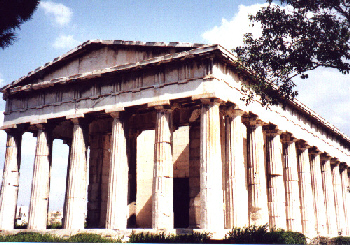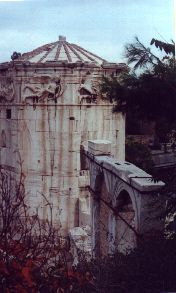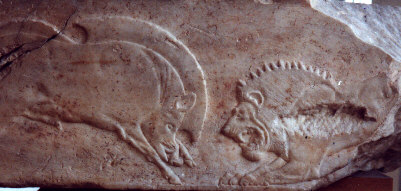This
pleasant wooded area was the focal point of
ancient Athens, the centre of commercial, political and
social life (for men that is, the only women here were
prostitutes and poor women pedlars.)
It was here that Socrates expounded his
philosophy, and men debated, argued and generally put the
world to rights, and where, later, Saint Paul
preached. It contains the ruins of the 4th century temple
of Apollo, and the remarkably well preserved temple to
Hephaistos (Vulcan), the patron of blacksmiths and
metalworkers. Also erroneously known as the Thesion, this
temple escaped destruction as it was used as a church,
the wooden ceiling being replaced with a barrelled vault
(which you can glimpse inside).
Built about the same time as the Parthenon it has the classical
form of 6 x 13 Doric columns with Ionic
friezes.
Do visit the museum, contained in the reconstructed Stoa of Attalos(originally 2nd century BC). Here you can see charming everyday objects from graves, an amazing balloting machine, a child's potty and the óstraka, pieces of pot on which names of those thought to be a threat were scratched, a water clock for lawyers (to stop them talking too much!), a 5th century portable oven, a clay sieve and a clay sausage grill. The exhibits cover a wide period form Mycenaean to Byzantine.


